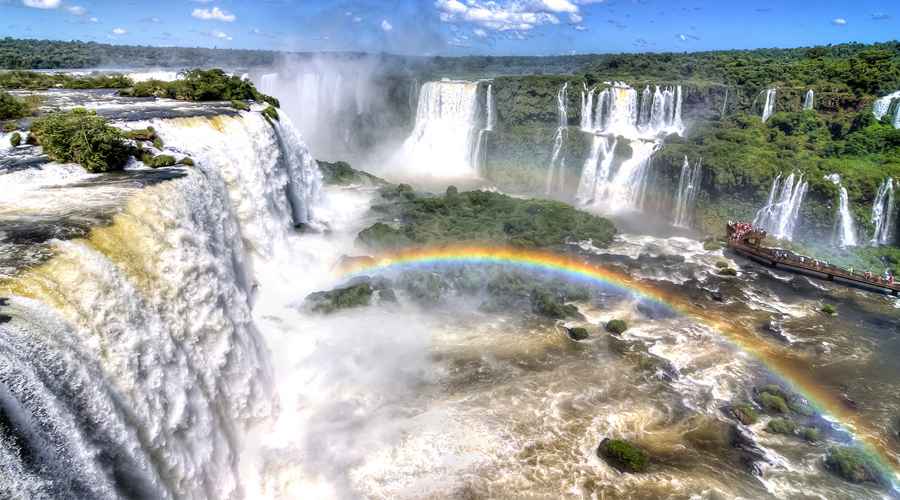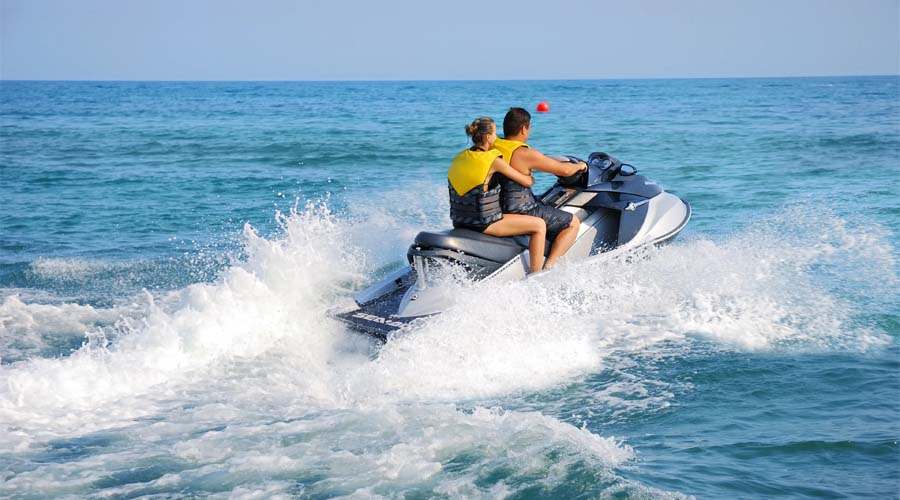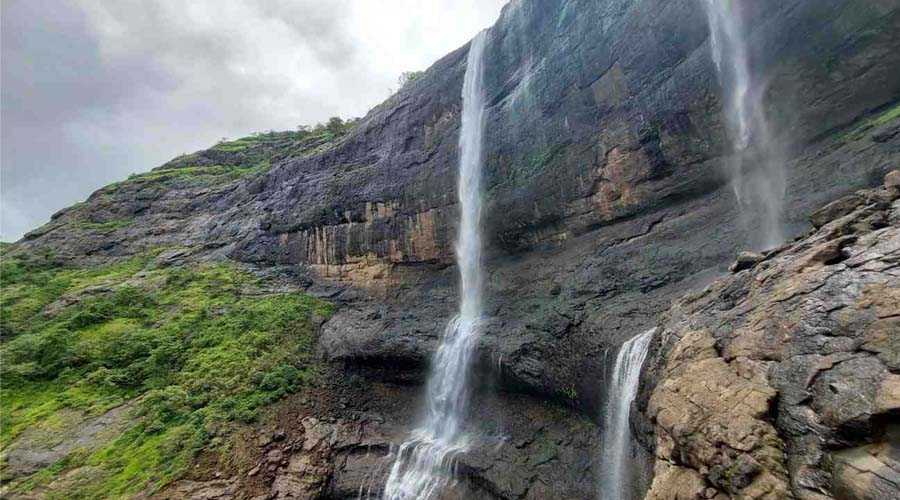Waterfalls are one of nature’s most breathtaking spectacles, where the sheer force of flowing water meets dramatic landscapes. Across the globe, countless waterfalls captivate explorers, photographers, and travelers. But when it comes to the biggest waterfalls in terms of height, width, and volume of water, only a few make it to the list of the world’s true giants. These natural wonders are not just visually stunning but also play an essential role in shaping ecosystems and local cultures. Here’s a detailed look at the Top 10 Tallest Waterfalls in the World.
1. Angel Falls, Venezuela
Angel Falls is the tallest uninterrupted waterfall in the world. Plunging from a height of 979 meters (3,212 feet), the water cascades from the summit of Auyán-tepui mountain in Canaima National Park. It is so high that strong winds often turn the falling water into mist before it reaches the ground.
Located deep within the Venezuelan jungle, Angel Falls was named after American aviator Jimmy Angel, who was the first to fly over it in 1933. Accessible only by air or river, this UNESCO World Heritage Site symbolizes untouched natural beauty. For adventurers, the journey to the base often involves rainforest treks and canoe trips, making it a true bucket-list experience.
2. Tugela Falls, South Africa
Tugela Falls, located in the Drakensberg (Dragon’s Mountains) of South Africa, is considered the second tallest waterfall in the world. With a combined height of around 948 meters (3,110 feet), it tumbles down in a series of drops from the towering Drakensberg escarpment.
Unlike Angel Falls, Tugela’s accessibility makes it popular among hikers. During the summer and after heavy rainfall, the water volume surges, creating a spectacular sight. The surrounding Royal Natal National Park, with its rugged peaks and lush valleys, adds to the falls’ dramatic presence.
3. Tres Hermanas Falls, Peru
Tucked away in the cloud forests of Peru, Tres Hermanas Falls (meaning “Three Sisters Falls”) is one of the tallest waterfalls in the world at approximately 914 meters (3,000 feet). True to its name, it comprises three distinct falls cascading down a rocky cliffside.
Situated in Otishi National Park, this waterfall is difficult to access due to its remote location and dense forests. Its beauty remains largely untouched by mass tourism, making it a hidden jewel cherished by eco-travelers and nature researchers. Surrounded by diverse flora and fauna, the falls are part of Peru’s lesser-known but rich natural heritage.
4. Olo’upena Falls, Hawaii, USA
Hawaii, known for its volcanic mountains and coastal cliffs, is also home to Olo’upena Falls, one of the tallest waterfalls in the United States. Dropping an astonishing 900 meters (2,953 feet), it descends down the sea cliffs of Moloka’i island.
What makes this waterfall remarkable is that it is only visible from the air or the ocean. The steep, inaccessible cliffs prevent any ground-based approach, adding to its mystery and grandeur. Visible mainly during the wet season, Olo’upena appears like silver threads streaming down green cliffs—an unforgettable view for visitors who manage to catch a glimpse.
5. Yumbilla Falls, Peru
Another Peruvian marvel, Yumbilla Falls, stands at about 896 meters (2,940 feet). Located in the Amazonas region, this waterfall only came into prominence in 2007 after a geographical survey. Despite being one of the world’s tallest, it is relatively unknown compared to other famous waterfalls.
Visitors can trek through the cloud forests of northern Peru to reach Yumbilla, where they’ll also encounter several smaller waterfalls along the way. Birdwatchers particularly enjoy the region, as endangered species like the spatuletail hummingbird thrive here. Yumbilla blends adventure with biodiversity, making it a must-see for eco-tourists.
6. Vinnufossen, Norway
Europe’s tallest waterfall, Vinnufossen, drops an impressive 860 meters (2,820 feet). Situated in Møre og Romsdal county in Norway, this waterfall is fed by the Vinnufonna glacier. With multiple cascades flowing down rugged cliffs, it is an iconic sight in the scenic Sunndal Valley.
Norway is known for its fjords and waterfalls, but Vinnufossen holds a special place as one of the continent’s giants. During the spring and summer months, when the glacier melts, the waterfall flows at its most powerful. The picturesque Norwegian countryside surrounding Vinnufossen adds to its charm, attracting hikers and photographers alike.
7. Balåifossen, Norway
Another Norwegian masterpiece, Balåifossen is often overshadowed by Vinnufossen but still ranks among the world’s tallest waterfalls. With a vertical drop of 850 meters (2,789 feet), it flows down steep cliffs near Hardangerfjord.
The seasonal nature of Balåifossen means it is most spectacular during spring snowmelt when torrents of water gush down. Its remote location, combined with Norway’s dramatic landscapes, gives visitors a sense of raw, untouched wilderness. Those lucky enough to witness Balåifossen in full force are treated to one of nature’s grandest shows.
8. Pu’uka’oku Falls, Hawaii, USA
Hawaii features again with Pu’uka’oku Falls, another of the towering sea cliff waterfalls of Moloka’i island. At around 840 meters (2,756 feet), it is one of the tallest waterfalls on Earth and one of the most challenging to view due to its inaccessibility.
Best seen from a helicopter or by boat, Pu’uka’oku cascades dramatically into the Pacific Ocean after tumbling down sheer volcanic cliffs. The falls’ remoteness enhances their allure, symbolizing the raw power of the Hawaiian landscape and its geological formation.
9. James Bruce Falls, Canada
Nestled in British Columbia, Canada, James Bruce Falls is the tallest measured waterfall in North America, dropping 840 meters (2,756 feet). Fed by snowfields, it flows seasonally into Princess Louisa Inlet, one of Canada’s most beautiful fjords.
Accessible mainly by boat, the falls are most active in late spring and summer, when snowmelt is at its peak. The surrounding fjords and forested cliffs create a stunning backdrop, making James Bruce Falls a spectacular but relatively underappreciated natural wonder of Canada.
10. Browne Falls, New Zealand
Rounding off the list is Browne Falls in Fiordland National Park, New Zealand. With a drop of around 836 meters (2,744 feet), it cascades from Lake Browne into Doubtful Sound, one of the country’s most dramatic fjords.
New Zealand’s Fiordland is famed for its waterfalls, but Browne Falls holds the distinction of being among the tallest. Whether viewed by scenic cruises or flights over Doubtful Sound, it is a highlight of one of the world’s most pristine environments. The falls are often compared with nearby Sutherland Falls, another Kiwi icon.
Final Thoughts
The world’s tallest waterfalls combine staggering height with powerful volume and dramatic surroundings. From Venezuela’s Angel Falls to New Zealand’s Browne Falls, each of these wonders showcases how landscapes, weather, and time shape extraordinary natural spectacles. While some like Tugela or Vinnufossen are accessible to trekkers, others like Olo’upena or Pu’uka’oku remain remote, visible only from a distance.
Whether you are an adventurer seeking a trek through rainforests, a photographer chasing dramatic views, or simply a lover of nature, the planet’s tallest waterfalls remind us of Earth’s raw beauty. Visiting them is more than a journey—it’s an encounter with one of nature’s most powerful forces.


